Signs Of Alien Life Have Allegedly Been Found In Ancient Artwork – See The Photos
Tags: opinion
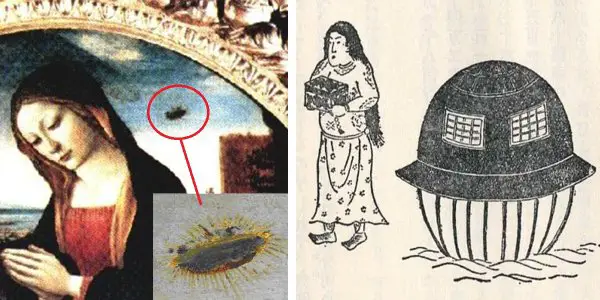
New conspiracy theories state that signs of alien visits could be hidden in ancient artwork.
The theorists claim that there are various symbols and shapes which represent clear signs of alien life within ancient paintings, cave drawings and even tapestries.
There are many different examples of these symbols, in a range of periodical artwork, although art experts claims that these are in fact misreadings of religious symbols and figures, and not signs of alien life.
Some examples which demonstrate this new conspiracy theory include the ‘Annuciation with Saint Emidius’, which is an alter-piece that was painted in 1486 by Italian artist Carlo Crivelli.
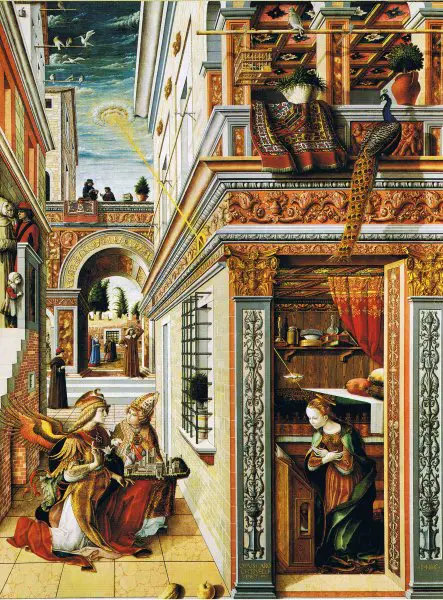
It was painted to depict Angel Gabriel’s announcement to the Virgin Mary that she was going to give birth to God’s son Jesus, although many suggest that a circular light seen shining onto Mary is actually a UFO spaceship.
The art experts have disagreed, and stated that the light is a collection of angels, and the light is symbolic of the Holy Spirit descending towards Mary.
But this is not the only piece of artwork that has been disputed. Another piece of artwork that is seen to contain evidence of alien life is a piece called ‘Saint Wolfgang and the Devil’, which was created by the famous 15th century Austrian Renaissance painter Michael Pacher, in 1475.
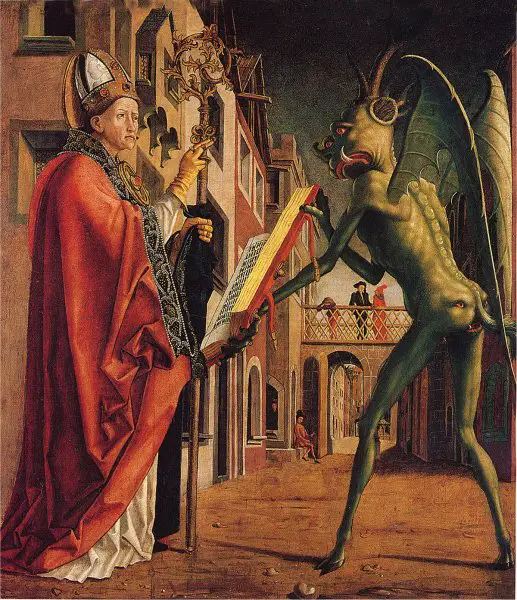
The work was based on a legend that Saint Wolfgang, who was the Bishop of Regensburg during the 10th century, had tricked the devil into building a church.
But some UFO fans have claimed that the figure showing the devil is actually a representation of an alien who visited Earth.
The theorists have also picked out the ‘Glorification of the Eucharist’, a 17th century piece by Ventura Salimbeni, which features God and Jesus looking out over their kingdom. UFO researchers have drawn attention to a rounded object which is located in between God and Jesus, and claim that it resembles Russia’s Sputnik satellite, which was launched in 1957, over 350 years after the painting was created.
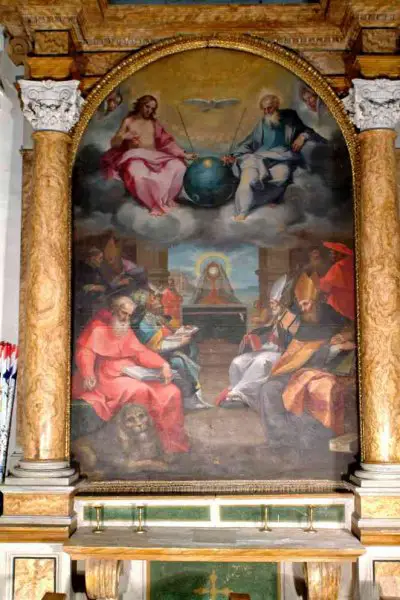
The connection was announced by conspirators on YouTube channel Strange Mysteries where they claimed that “this just looks a little bit too uncanny for symbolic reference. If the sphere is said to represent the universe, why did the painter not include any stars or other celestial objects?”
What do you think? Are there hidden signs of alien life in this ancient artwork? Or are these UFO researchers simply seeing what they wish to see?
Another ancient painting that has been noted to contain signs of alien visits to earth is the Madonna with Saint Giovannino. The 15th century painting by Italian Renaissance artist Domenico Ghirlandaio portrays Mary looking down on two children.
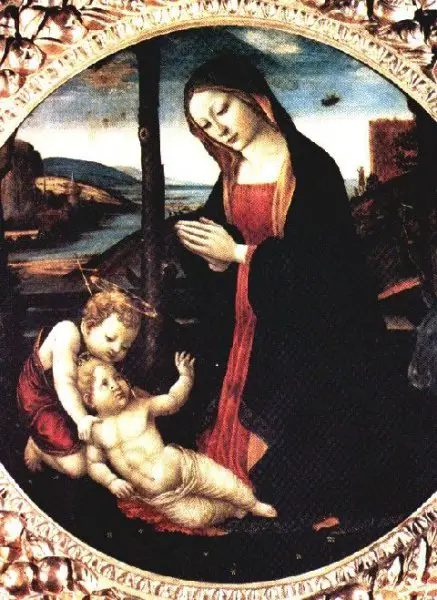
However, a small, dark object in the sky has been picked out by UFO hunters as evidence of a spaceship in the sky.
The object sits to the right of Mary’s head, and theorists claim that a shepherd can also be seen in the background shielding his eyes from the sun as he points an arm towards the mysterious flying object.
UFO researchers from CoolInterestingStuff claim that Mary could be seen in the painting, which hangs in the Palazzo Vecchio in Florence, Italy, to be blocking the two babies from the view of the “flying saucer”.
Despite these reasonings, and the theorists thoughts that the object has no other context in the painting, art experts claim that clouding shining light as religious symbols, which look similar to the object in the sky of the Madonna with Saint Giovannino, were a common occurrence in the artwork on this era.
Quite a contrast from the previous paintings discussed, is illustration from 1844 titled ‘Ume No Chiri’ shows a mysterious object which was found drifting from the coast of Eastern Japan’s Hitachi province in 1803.
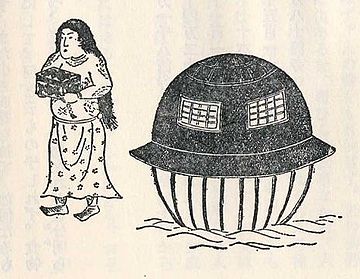
Theorists claim that it shows a UFO-like object, which was made from steel and glass, according to the notes that were alongside the illustration, as well as being just big enough to fit a human inside.
The same object is found in three separate Japanese texts, which are Toen shōsetsu (1825), Hyōryū kishū (1835) and Ume-no-chiri (1844).
About The Author
Jess Murray is a wildlife filmmaker and conservation blogger, having recently returned from studying wildlife and conservation in South Africa, she is now striving to spread awareness about the truth behind faux conservation facilities throughout the world. You can follow Jess on Facebook Here

Would you like to create dream like states of relaxation on demand by tuning into the natural laws of nature? Join me and 500 other like minded individuals for a free online sound healing training which you can access instantly here…..
Leave Comment: